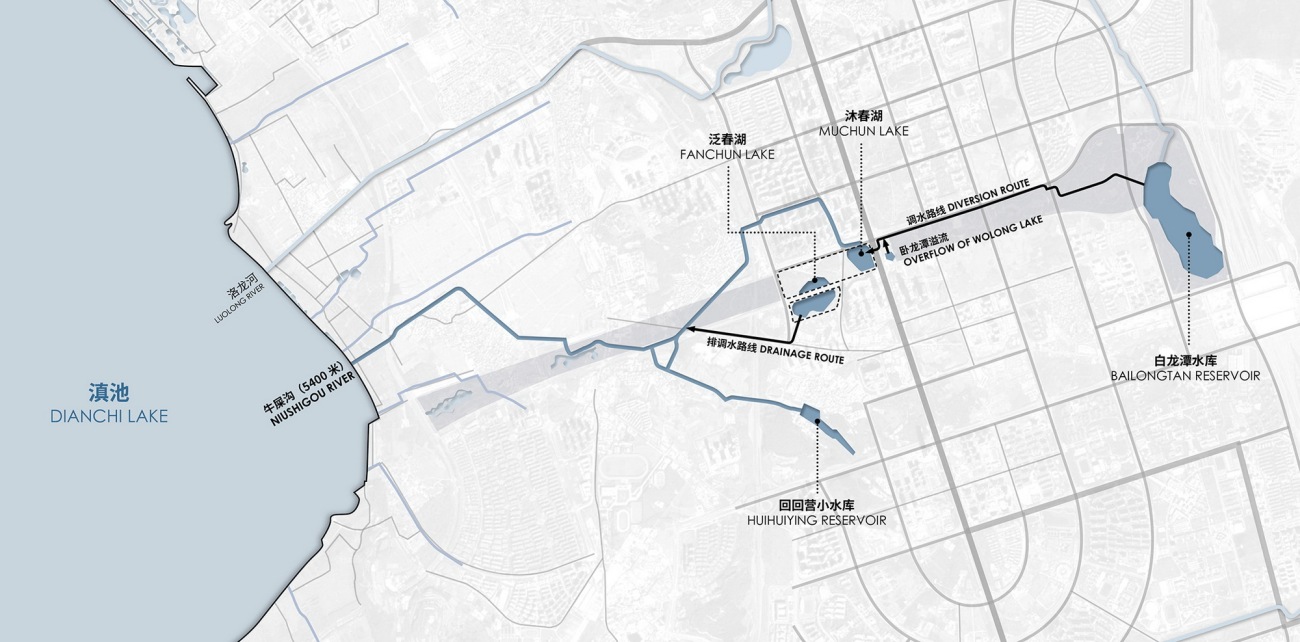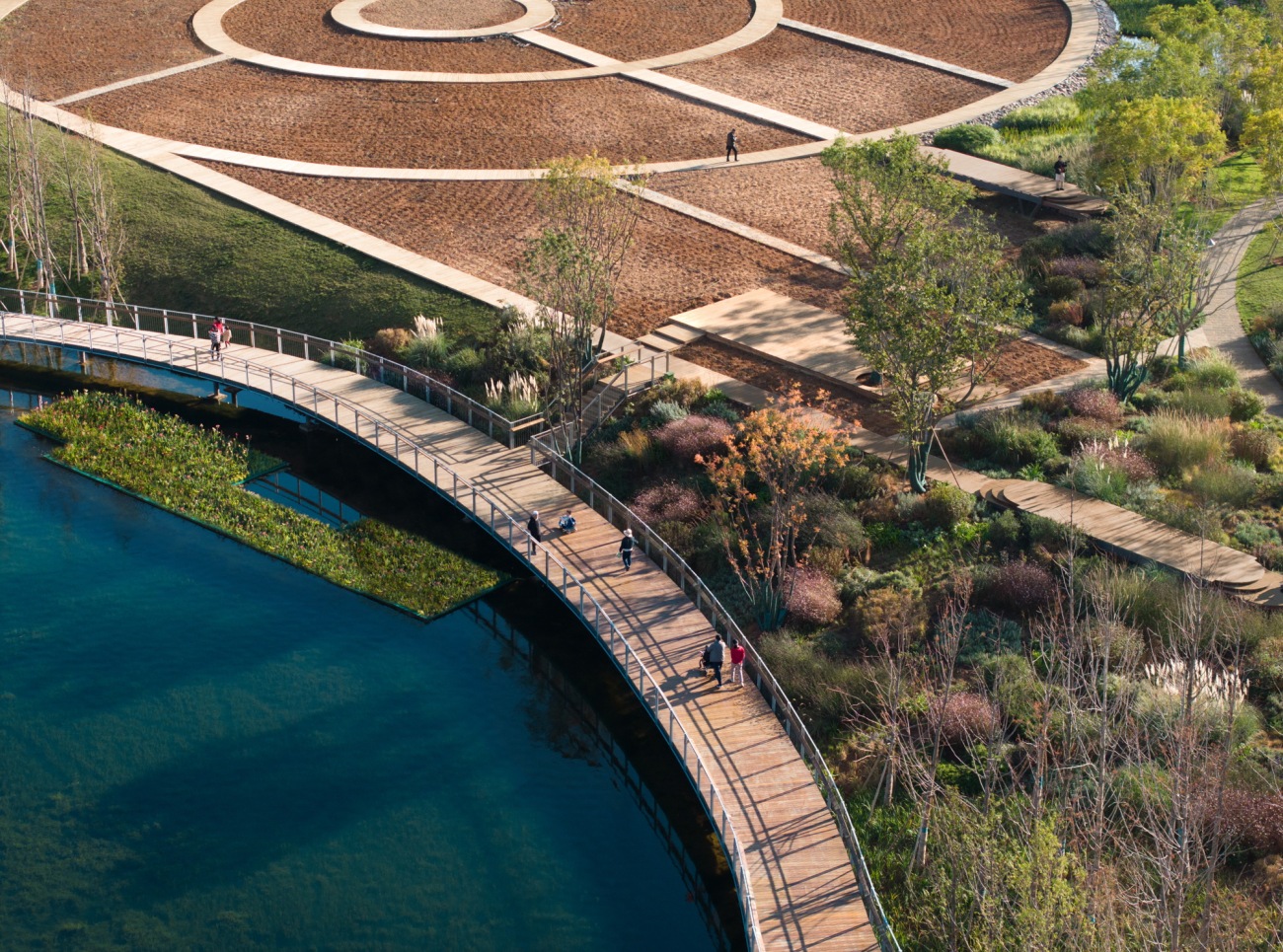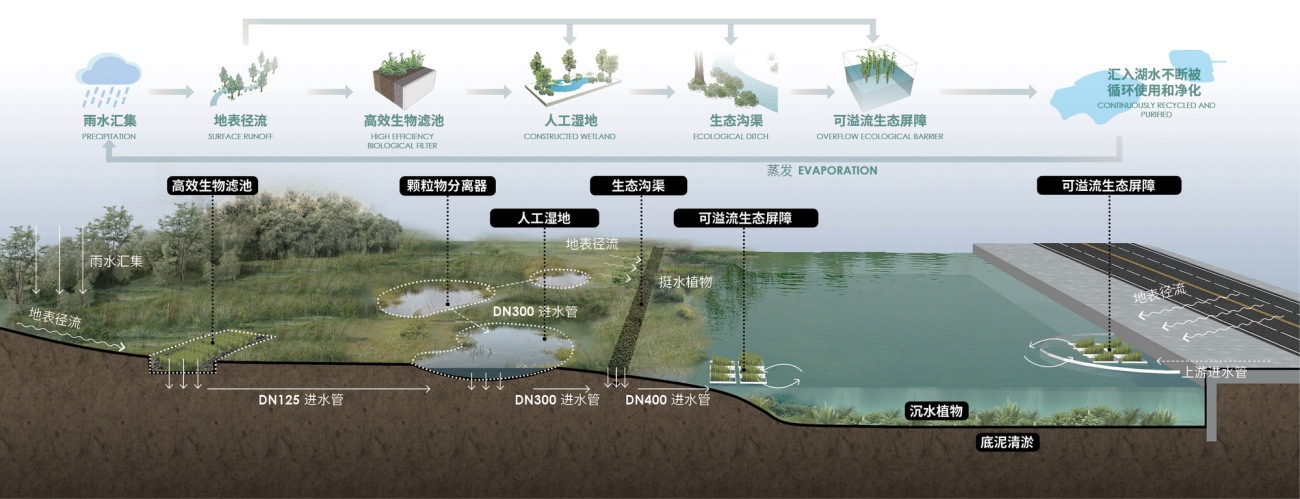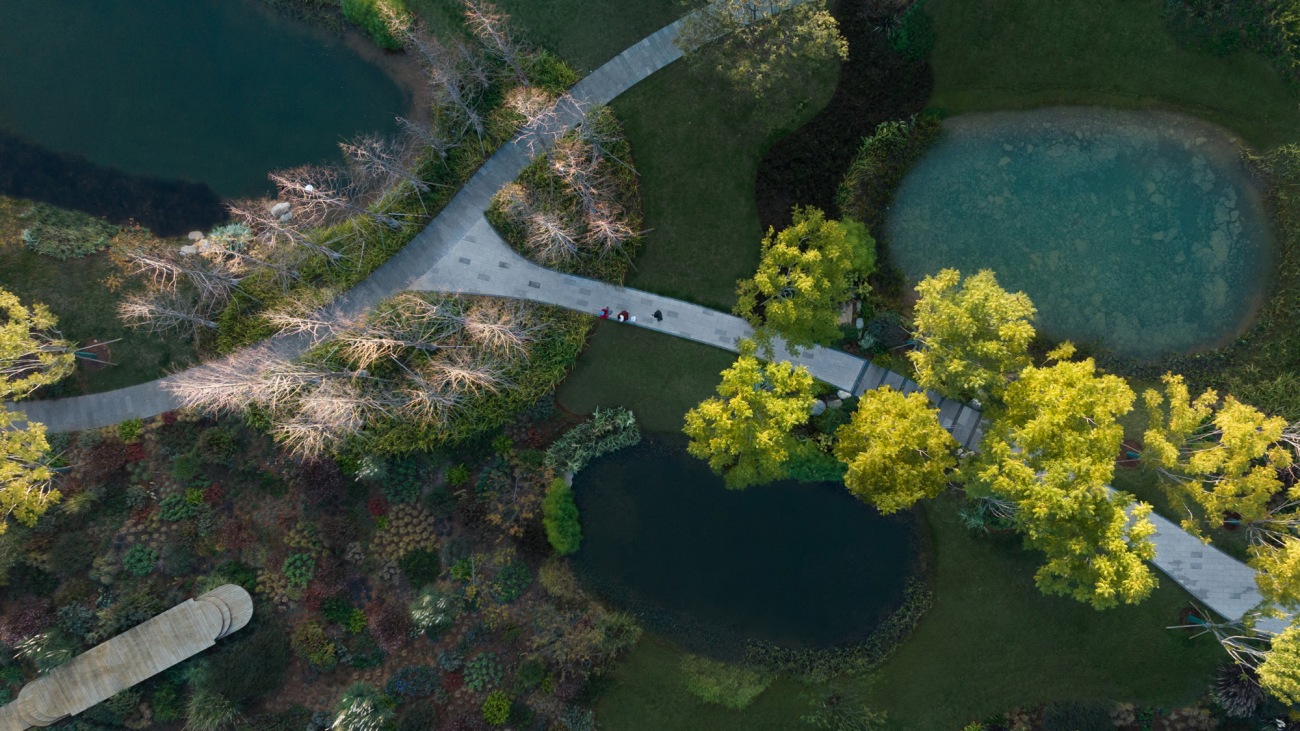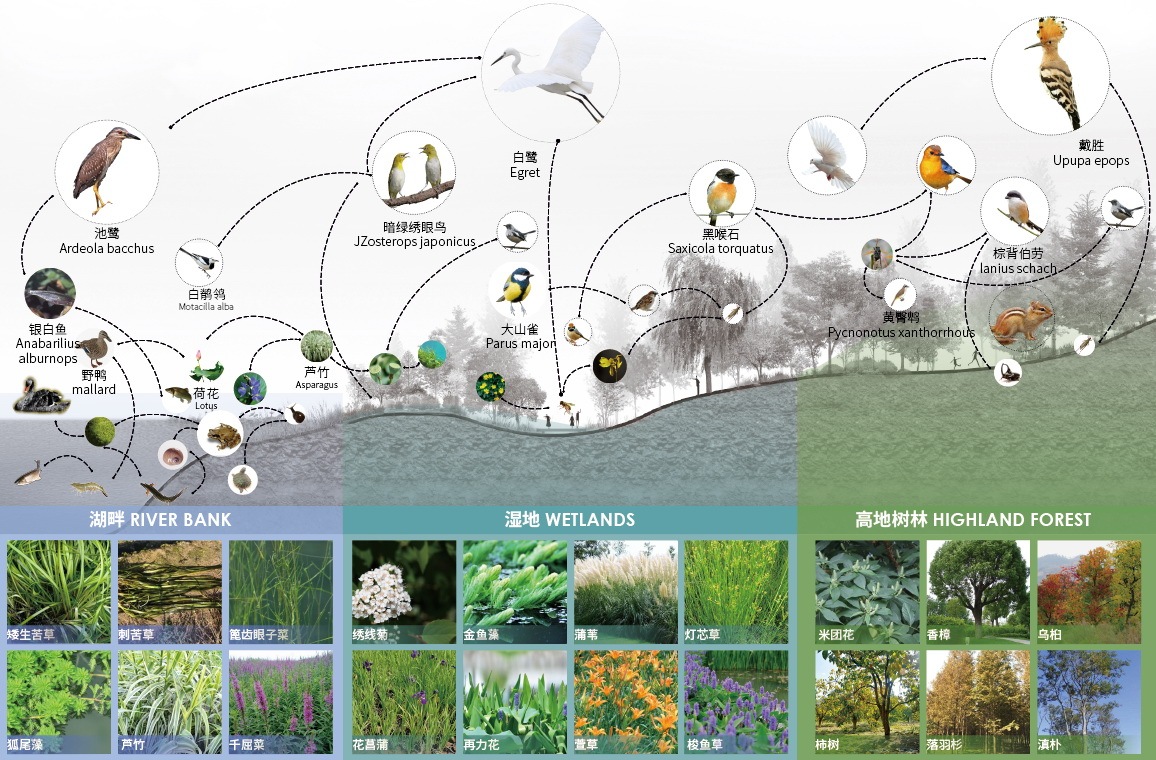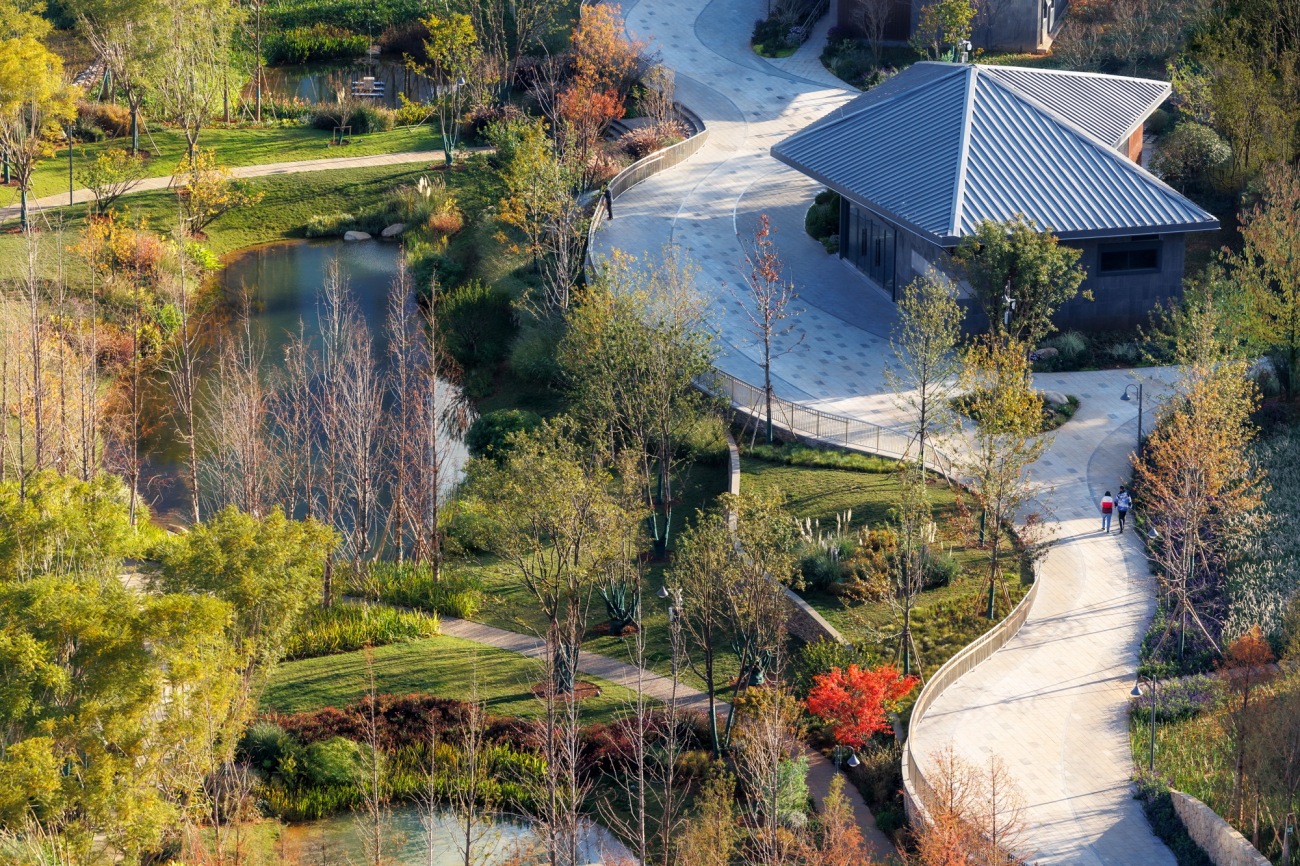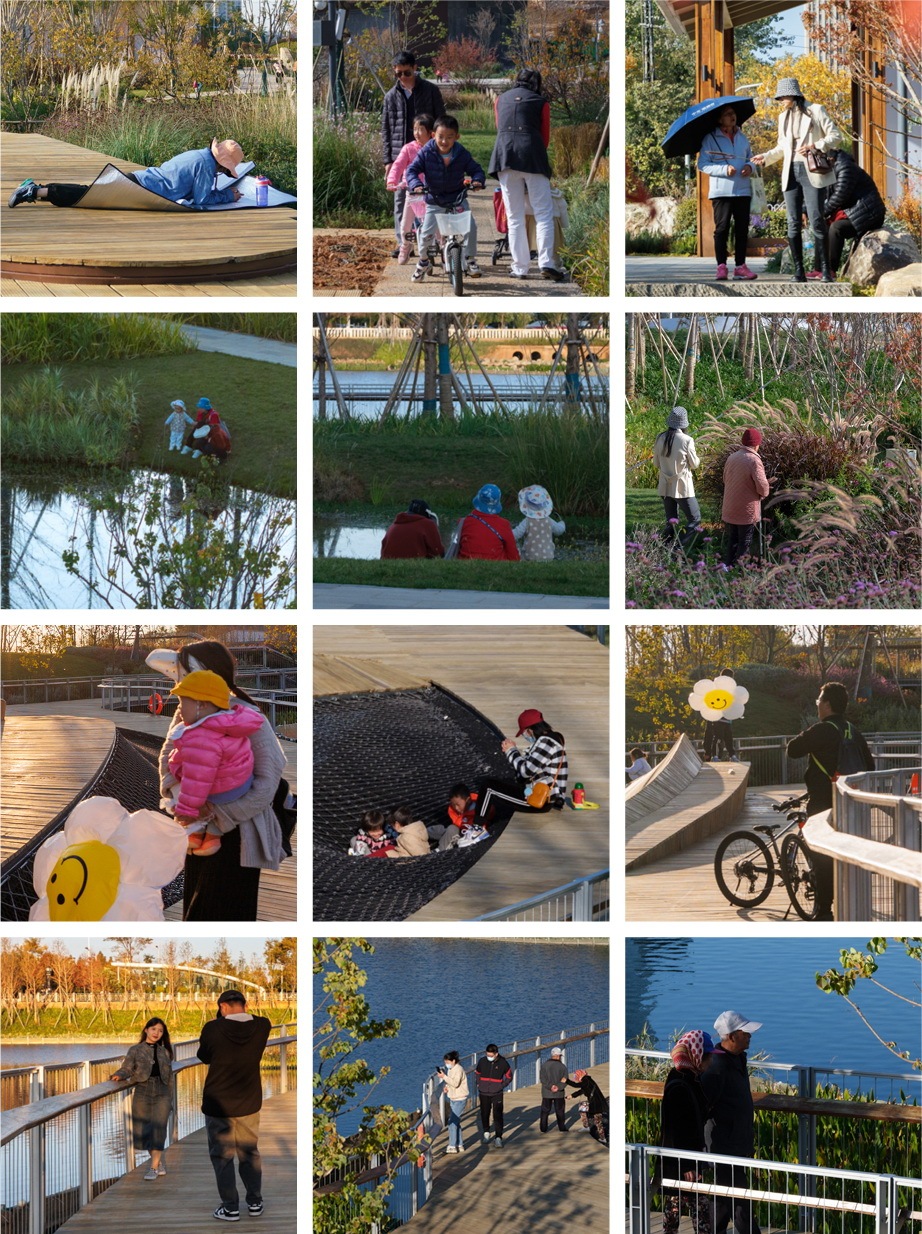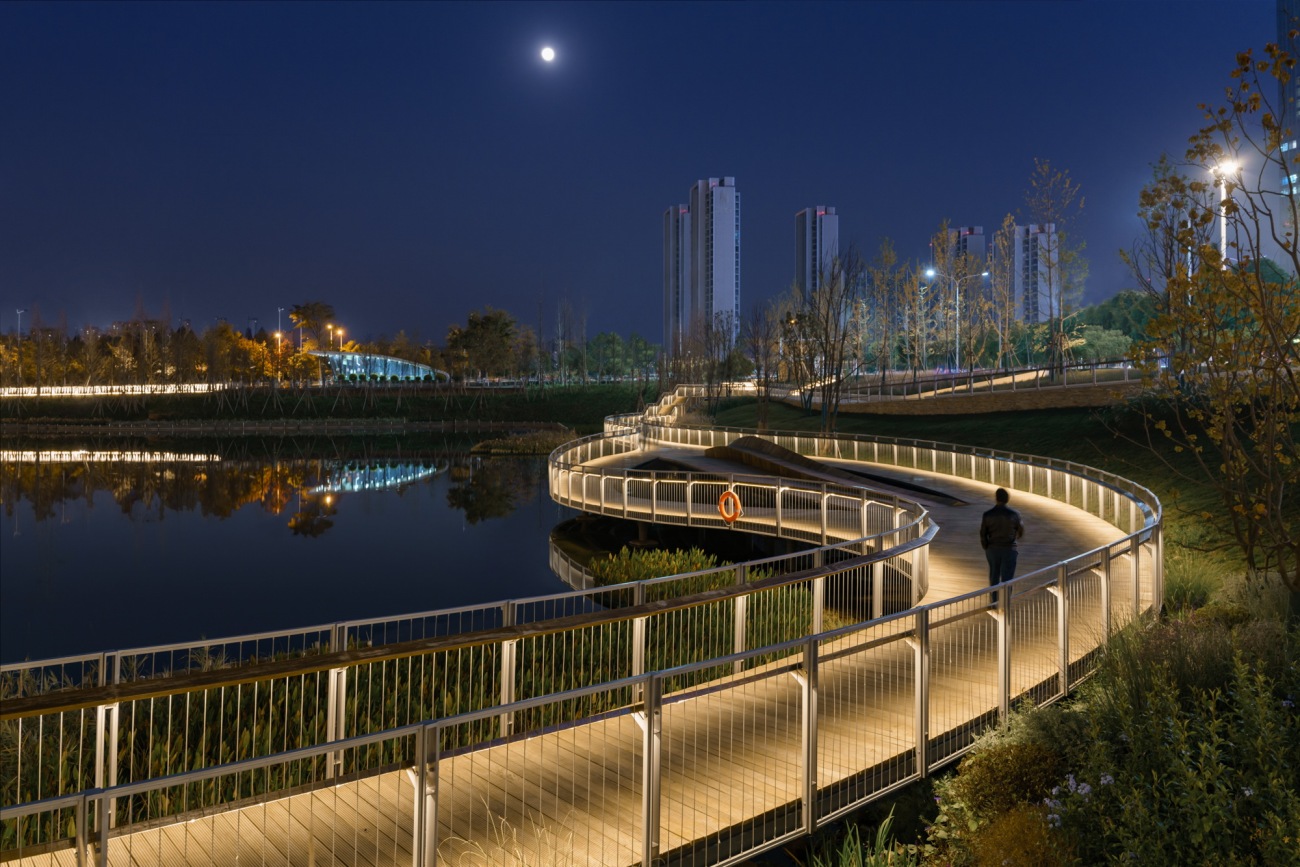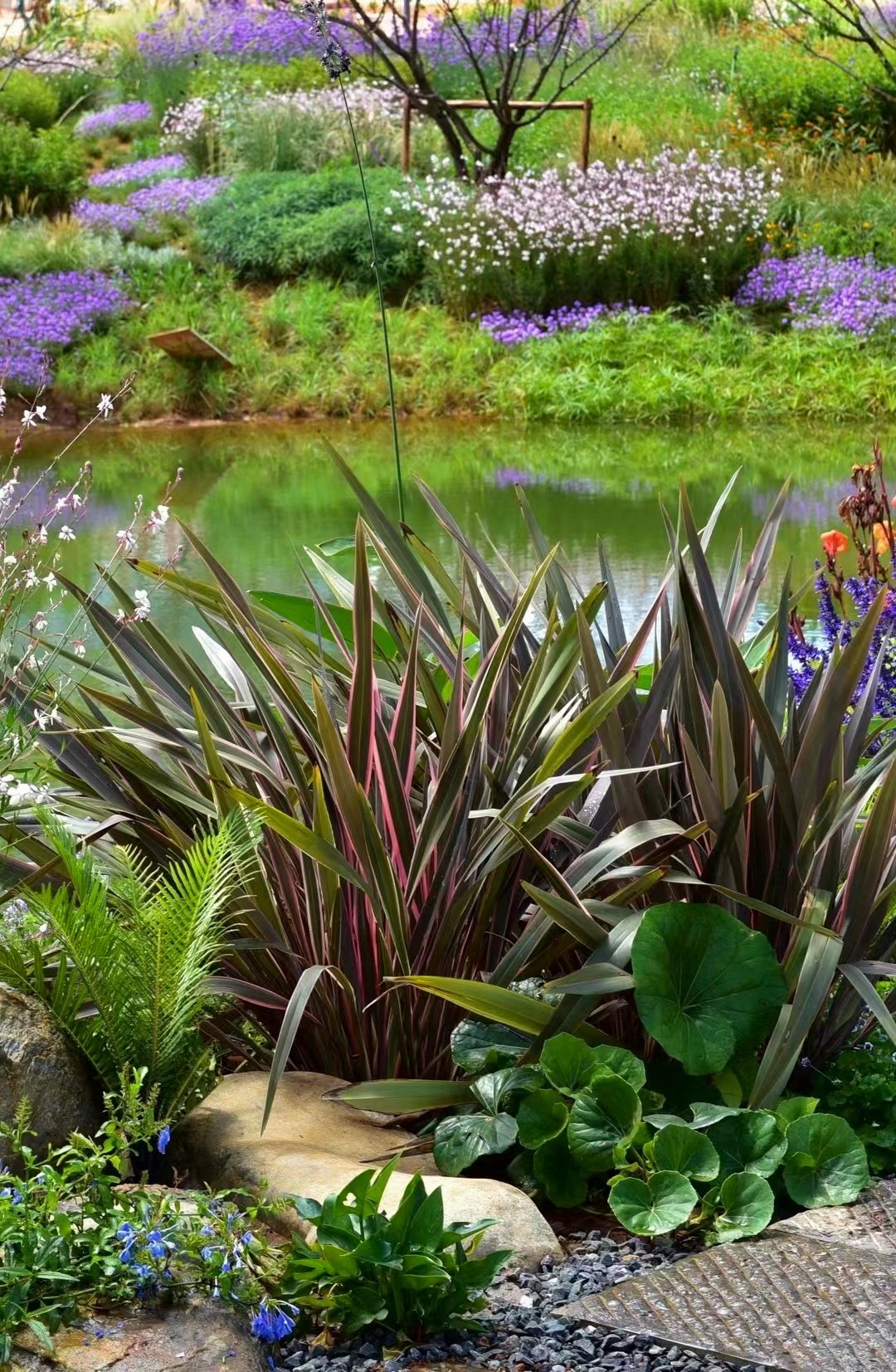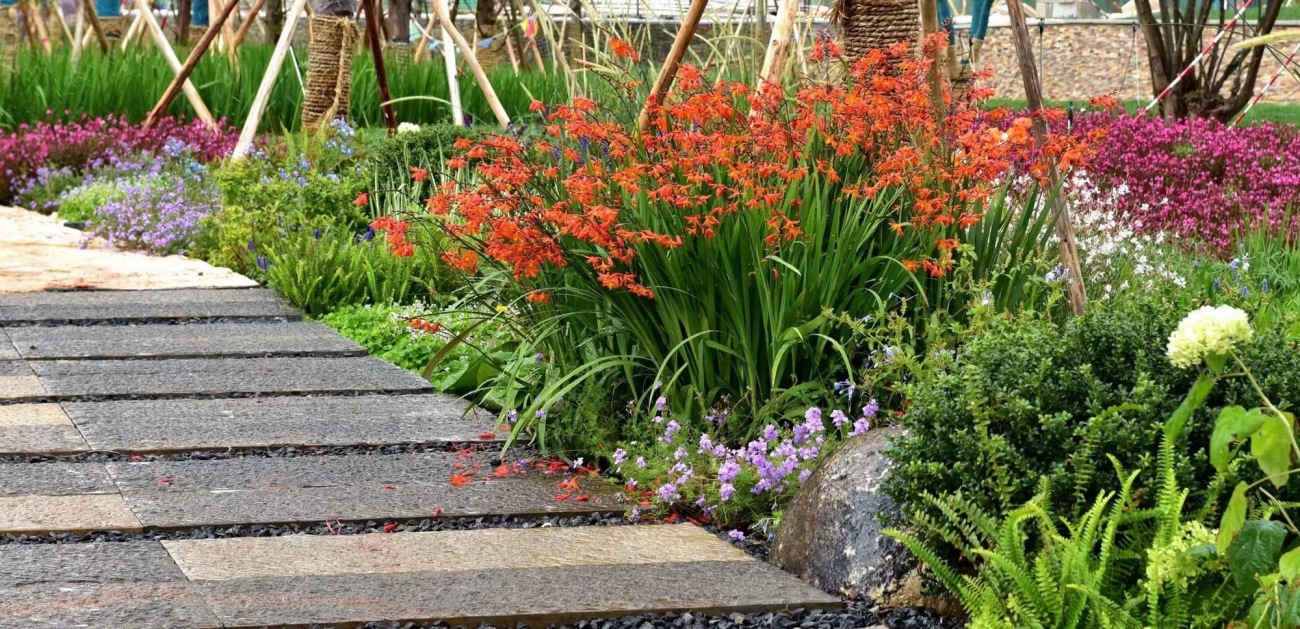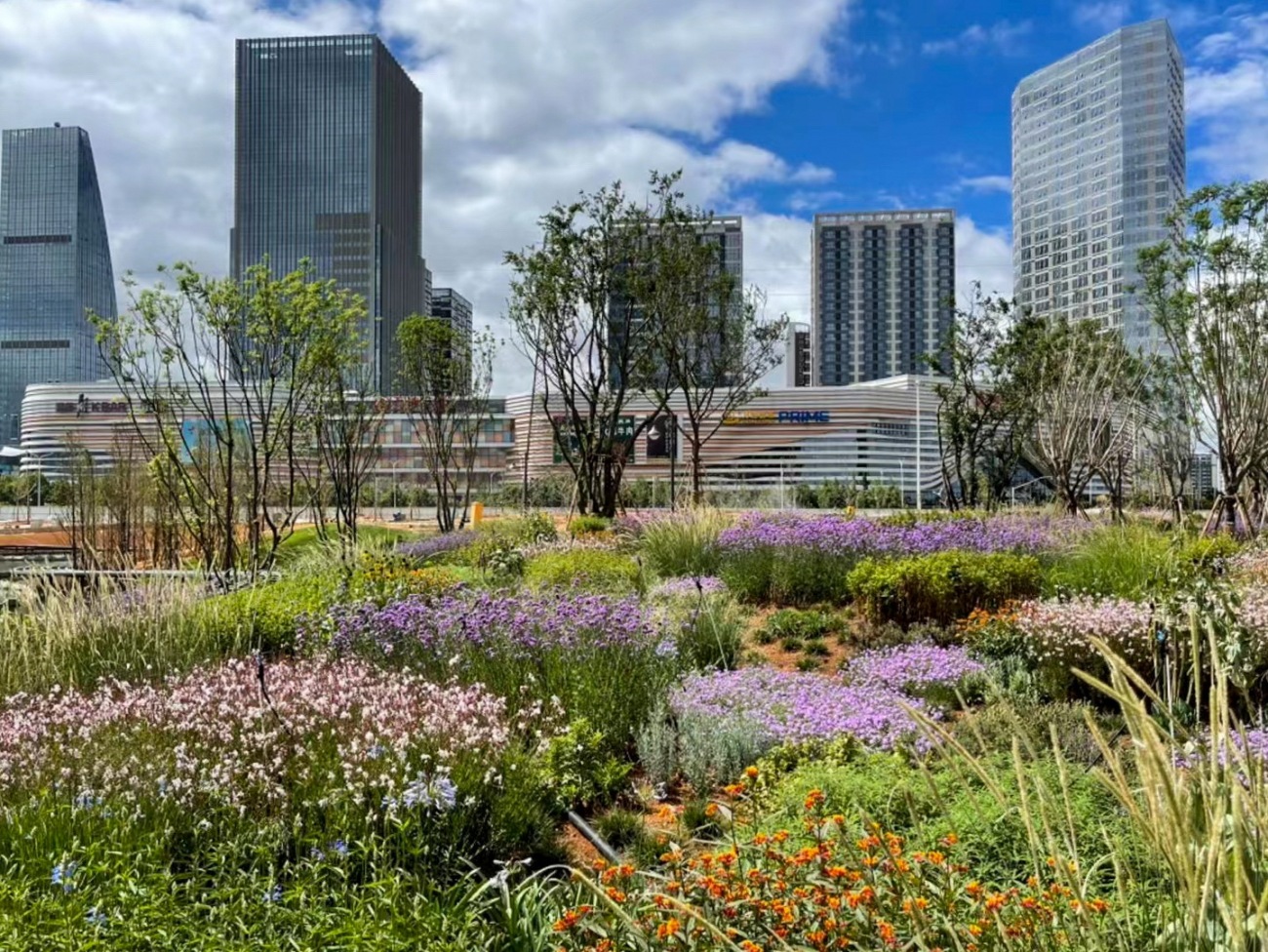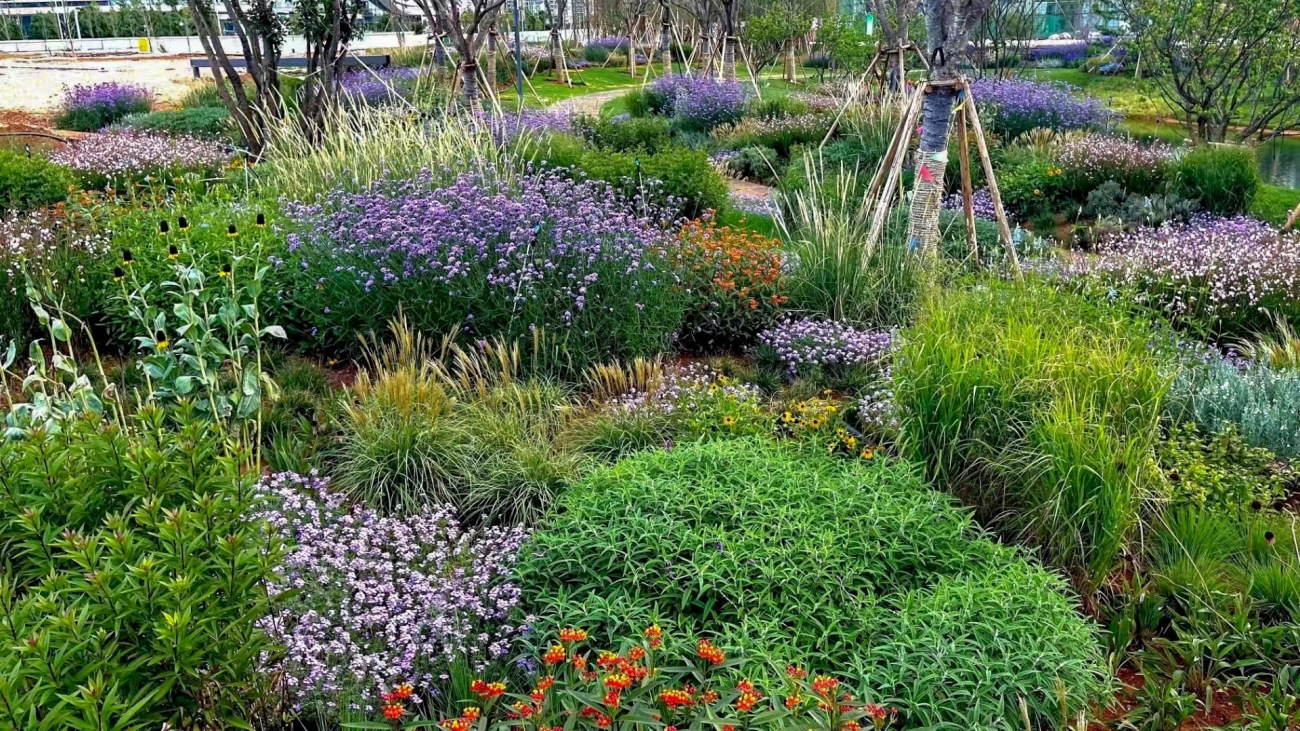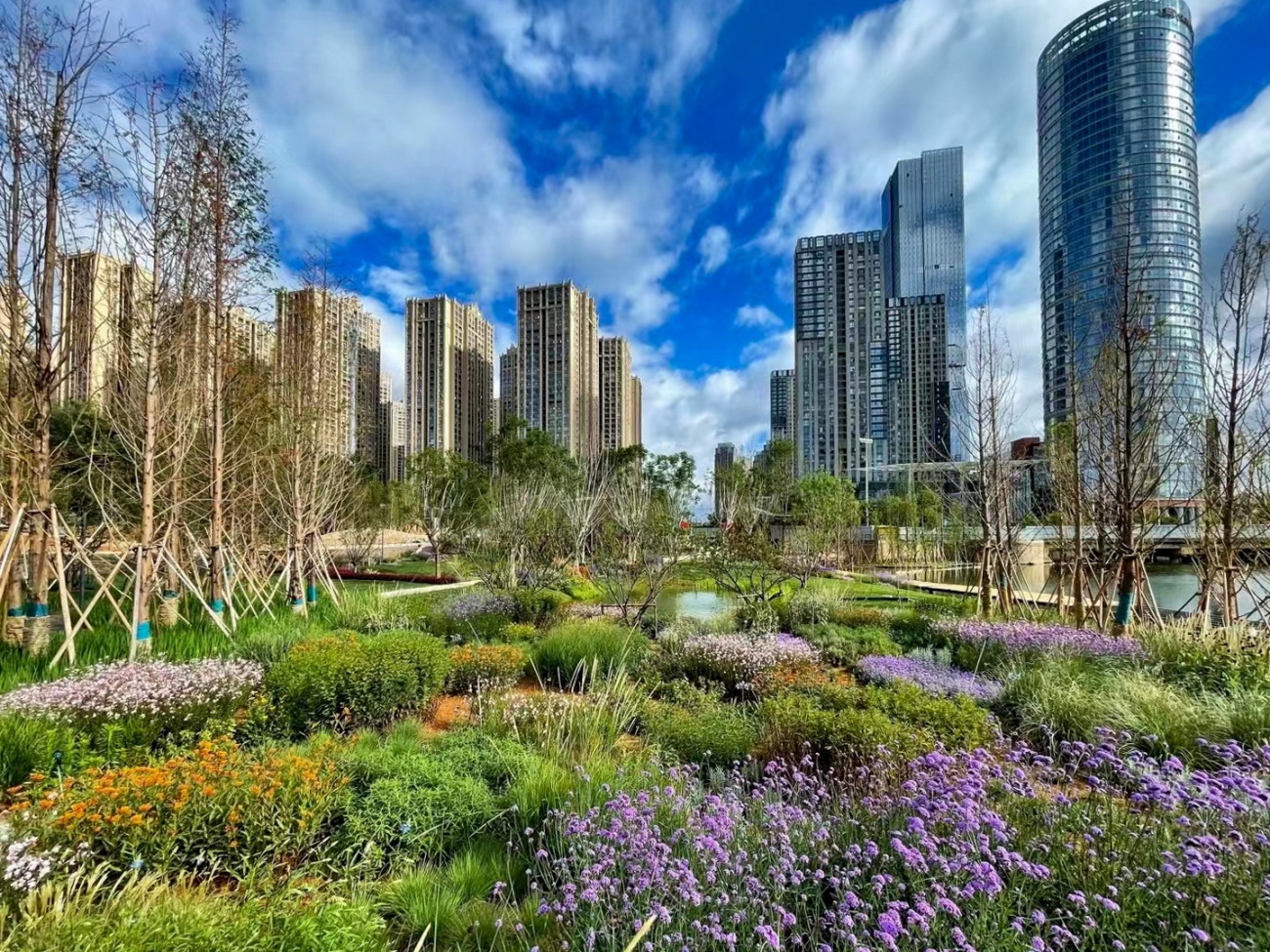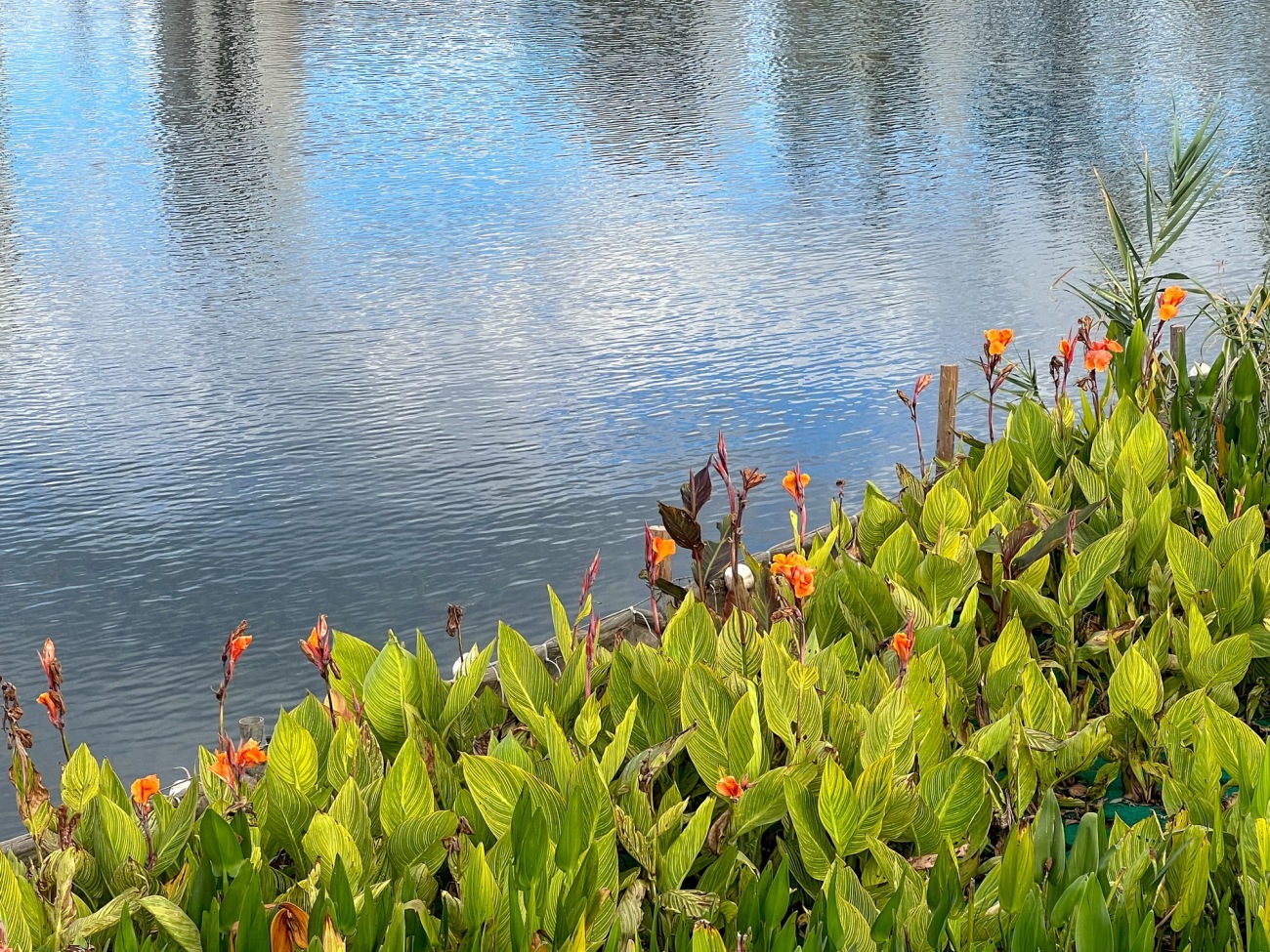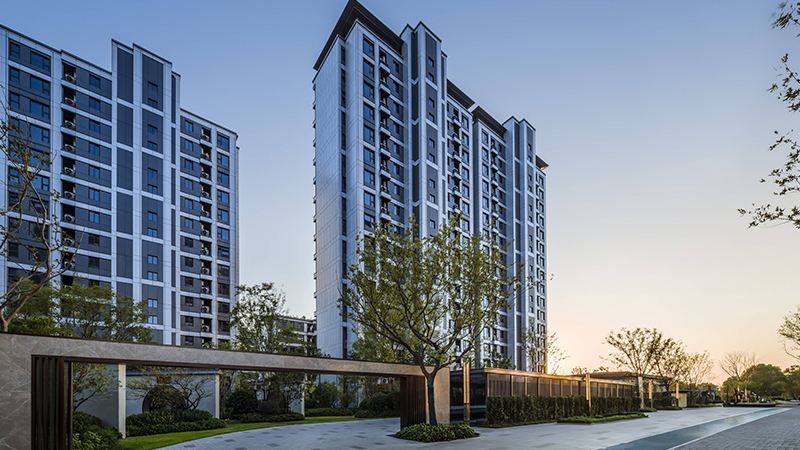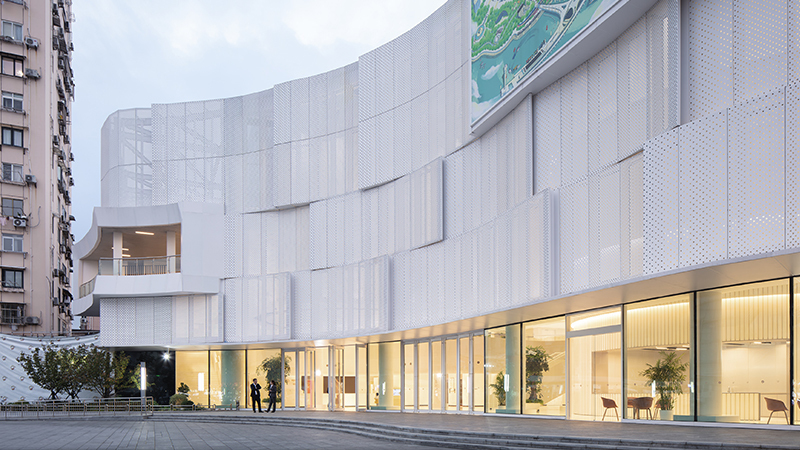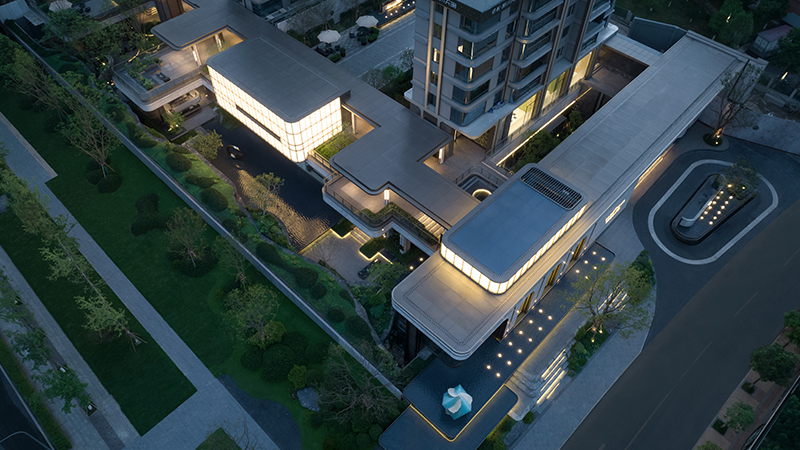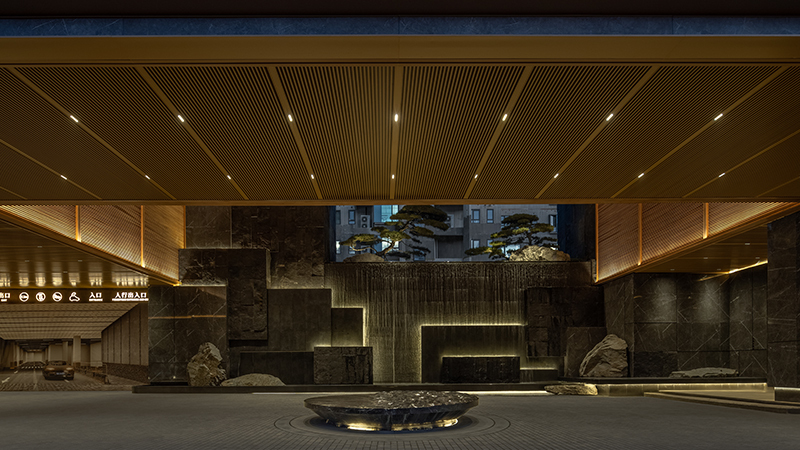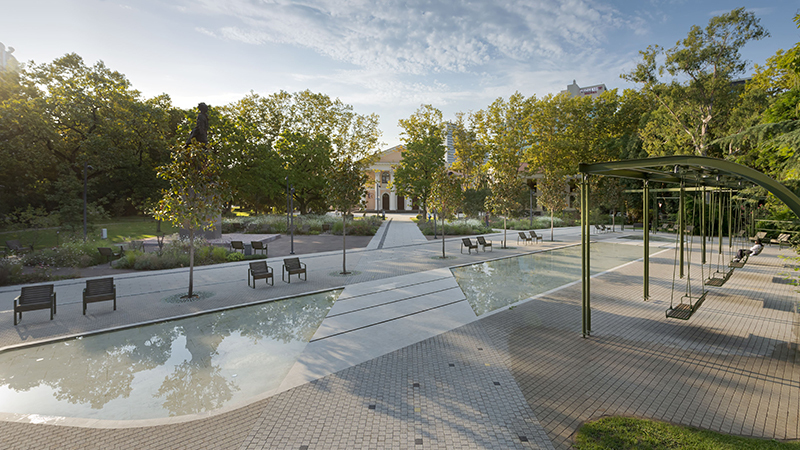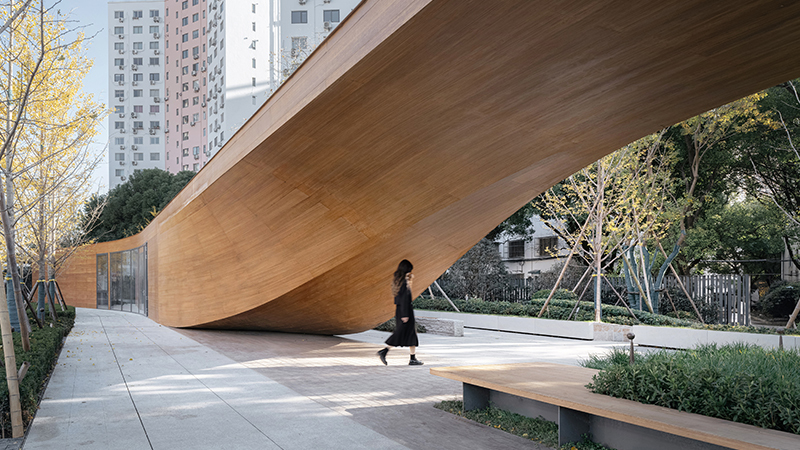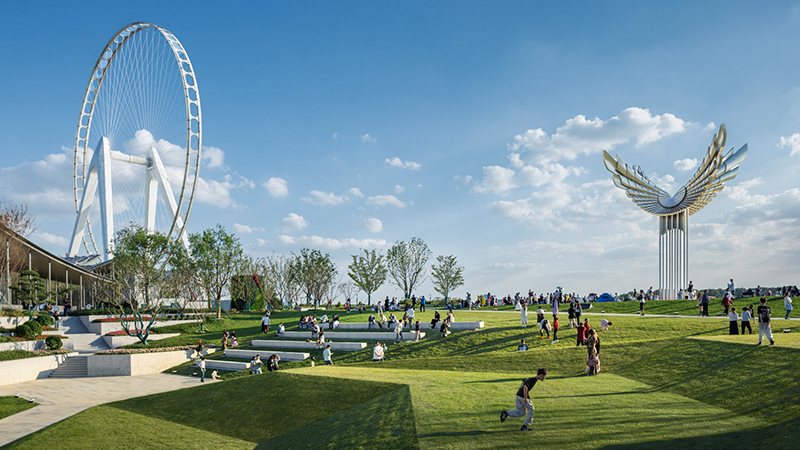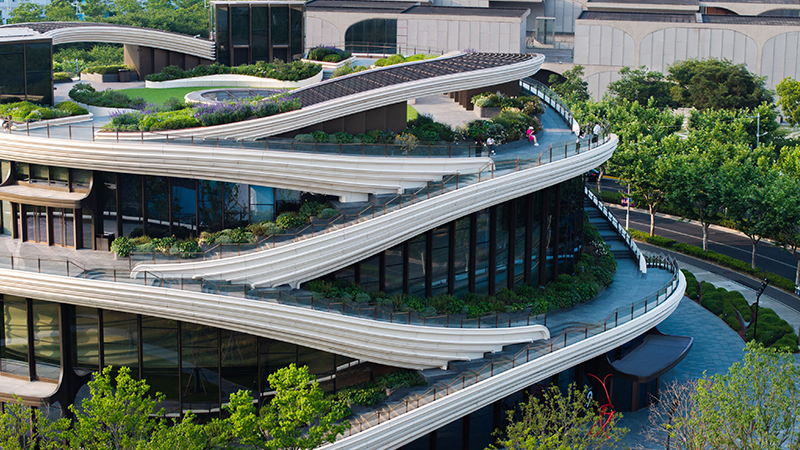一、项目背景:滇池保护的重要节点
I. Project background: key node of Dianchi Lake protection
泛春湖、沐春湖位于昆明呈贡区中心,属长江流域洛龙河水系,自白龙潭水库起,汇入滇池,处于滇池三级保护区内。包括泛春湖、沐春湖水环境整治在内的滇池上游水系的截污治污举措,是滇池保护治理措施的重要组成部分。
Fanchun Lake and Muchun Lake are located in the center of Chenggong District of Kunming, belonging to the Luolong River system of the Yangtze River basin. Starting from Bailongtan Reservoir and flowing into Dianchi Lake, they are placed in the third level protection zone of Dianchi Lake. The measures to intercept and control pollution in the upstream water system of Dianchi Lake, including the water environment improvement of Fanchun Lake and Muchun Lake, are an important part of the protection and treatment efforts of Dianchi Lake.
水域面积为11.12公顷,占公园总面积的44%。项目建设前湖体污染较重,沐春湖平均水质Ⅴ类,泛春湖COD 超标严重,水质类别仅为劣Ⅴ类。水体浑浊,基本不具备水生态系统自身净化能力,水体周边杂草丛生,生态环境失衡。
The water area stretches 11.12 hectares, totaling 44% of the area of the park. Before the launch of the project, the lake body was heavily polluted. The average water quality of Muchun Lake was Class V, the COD in Fanchun Lake seriously exceeded the standard, and its water quality fell to the poor Class V. The water body was turbid, basically devoid of the self-purification ability of the water ecosystem. Weeds were overgrown around the water body, and the ecological environment was unbalanced.
二、综合治理:系统性的统筹的生态空间
II. Comprehensive governance: systematic and integrated ecological space
设计核心思想在于从单一的公园景观设计向系统性统筹生态空间转变。设计团队从生态环境质量、生态物种成分等多方面评估现场条件,以提升水质、恢复生态平衡、改善人居环境为目标,综合提升生态环境品质。
The core idea of the design is to change from the pure park landscape design to systematic planning of the ecological space. The design team evaluates the site conditions from the perspectives of ecological environment quality and ecological species composition, aiming to elevate the water quality, restore the ecological balance and improve the living environment, and comprehensively lift the ecological environment quality.
项目以水环境治理为切入点,通过构建水下森林系统、建设高效生物滤池、打造人工湿地等措施形成自循环的水生态微环境;同时运用昆明本土植被,重建多样化的植被群落,修复动植物生境。营造参与性景观空间节点,改善人居环境,成为市民走进自然、亲近水域的理想场所。
The project starts with water environment treatment, and forms a self-circulating water ecological micro-environment through the construction of underwater forest system, efficient biological filters, and artificial wetland. At the same time, it rebuilds diverse vegetation communities and restores habitats of flora and fauna with Kunming native vegetation. It creates participatory landscape space nodes, and improves the living environment, making the site an ideal place for citizens to walk into nature and get close to the water.
三、设计策略
III. Design strategy
1.水环境治理,从污染严重的水库到清澈见底的水下森林
1. Water environment treatment, from heavily polluted reservoir to crystal clear underwater forest
措施一:外源污染控制
Measure 1: Control external pollution
针对上游来水及城市道路、农田地表径流造成的污染,采用由高效生物滤池及人工湿地组成的旁路处理系统进行处理。利用植物根系、漂浮湿地、人工水草作为挂膜基质,通过生物接触氧化技术对微污染雨水进行净化,从而控制外源污染对水体的水质的影响。
In view of the pollution caused by upstream water, urban road and farmland surface runoff, a bypass treatment system composed of high efficiency biological filter and constructed wetland is adopted to deal with it. Plant roots, floating wetlands and artificial aquatic grasses are used as hanging substrates to purify the micro-polluted rainwater with the biological contact oxidation technology, so as to control the influence of external pollution on water quality.
措施二:建立低维护、可持续的地表径流净化循环体系
Measure 2: Establish a low-maintenance and sustainable surface runoff purification cycle system
经地表土壤与植被初步净化后的地表径流通过高效生物滤池、人工湿地系统进一步去除水体中的超标污染物,处理完成后经生态沟渠汇集,排放进入泛春湖、沐春湖水体,由可溢流生态屏障进一步净化,形成低维护的水循环自净体系。
The surface runoff, after preliminary purification of surface soil and vegetation, further removes the excessive pollutants in the water body through the efficient biological filter and constructed wetland system. After the treatment is completed, it is collected by ecological ditches and discharged into the water bodies of Fanchun Lake and Muchun Lake, and gets further purified by the overflowable ecological barrier to form a low-maintenance water circulation self-purification system.
△低维护的水循环自净体系
措施三:构建水下森林系统,治理现状内源污染,提升水体自净能力
Measure 3: Build underwater forest system, control current internal pollution, and improve self-purification ability of water body
依据项目前期底泥测量,对淤泥堆积严重的沐春湖进行生态疏浚,将底泥降至适宜水生植物生长的厚度并进行消毒、改良等措施。利用沉水植物、水生动物、微生物在水体中形成生产、消费、分解者食物链模型,构建水生植物+底栖动物+浮游动物+肉食鱼类+微生物的完整水下森林生态系统,提升水体自净能力,长期涵养水质。
Muchun Lake, with severe silt accumulation, will go through ecological dredging, disinfection and improvement according to the sediment measurement in the early stage of the project, and the sediment will be reduced to a thickness suitable for the growth of aquatic plants. Submerged plants, aquatic animals and microorganisms will also be used to form a food chain model of production, consumption and decomposition in the water body, which builds a complete underwater forest ecosystem comprising aquatic plants, benthic animals, zooplankton, carnivorous fish, and microorganisms, to improve the self-purification capacity of the water body and boost long-term water quality conservation.
2.生态环境建设,城市背景下的生态花园
2. Ecological environment construction, and ecological garden in urban context
根据对动植物群落组成、数量、分布格局、栖息生境、生态习性和季节动态的研究,项目植被以本土植物为主,重建结构稳定的植物群落,为动物栖息地的恢复打下良好的基础。
Based on the study of the composition, quantity, distribution pattern, habitat, ecological habits and seasonal dynamics of the flora and fauna communities, it is decided to mainly take native plants as the vegetation of the project to rebuild a plant community with stable structure, laying a solid foundation for the restoration of animal habitats.
△动植物群落结构
湿地及滨水重点构建水生植物净化结构,形成“湿生植物一挺水植物一浮叶植物-沉水植物”的水陆生态交错带,营造自然式驳岸、水草丛生的湿地水塘、缤纷多彩的野趣花园,以修复生态系统的多样性、稳定性和可持续性,重建动植物生境。
The wetland and waterfront areas focus on the construction of an aquatic plant purification structure, and the formation of a land and water ecological crisscross belt featuring wet plants, water plants, floating foliage plants and submerged plants, to create a natural revetment, wetland pond overgrown with aquatic plants, and colorful wild garden, in order to restore an ecosystem of great diversity, stability and sustainability, and rebuild the habitat of flora and fauna.
项目紧邻万达广场与高层住宅区,通过多样的参与性活动空间植入,承接场地周边商业、商办、住宅、地铁站等地块人流,联通城市公共空间,改善了区域的生态环境及人居环境。浮在湖面上的木栈道、湿地花海中蜿蜒的小径,引导人们踏入自然之中。
The project presses close to the Wanda Plaza and high-rise residential areas. Through the implantation of a variety of participatory activity space, it undertakes the flow of people of the businesses, commercial offices, residential quarters, and subway stations around the site, connects the urban public space, and improves the ecological environment and living environment of the region. The wooden walkways floating on the lake and the winding paths in the wetland flower area guide people to step into nature.
3.滨水活力营造,市民亲近水与自然的窗口
3. Building waterfront vitality, a window for citizens to get close to water and nature
后期结合场地运营,开展生态净水科普、海绵城市、自然教育等科普研学活动。依托滨水栈道、自然花境、生态湿地、都市田园等多样的功能区块,打造沉浸式自然教育研学场景。公园成为市民走进自然、亲近水域的理想场所,为城市生活注入了一份清新和活力。
In the later stage, the project will carry out ecological water purification science popularization, sponge city, nature education and other popular science research activities along with the site operation. Relying on a variety of functional blocks, such as waterfront walkways, natural flower landscape, ecological wetland and urban countryside, it will create an immersive natural education and research scene. The park will become an ideal place for citizens to walk into nature and get close to water, injecting fresh vitality into urban life.
四、生态效益与社会效益
IV. Ecological and social benefits
项目作为滇池保护与治理的重要一环,将原本污染严重废弃水库改造成是集生态景观、海绵城市、研学科普、滨水休憩于一体的生态公园,塑造了稳定可持续的自净化景观生态系统,激发城市滨水活力,提供了高质量的城市开放空间,从而促进了城市的可持续发展。
As an important part of the protection and management of Dianchi Lake, the project transforms the original seriously polluted abandoned reservoir into an ecological park integrating ecological landscape, sponge city, research and science popularization, and waterfront recreation. It shapes a stable and sustainable self-purifying landscape ecosystem, stimulates the vitality of urban waterfront, provides high-quality urban open space, and thus promotes sustainable development of the city.
经过综合治理,泛春湖、沐春湖水质由治理前的劣V类水质稳定提升至地表IV类水质,本项目水体于枯水期仅需补充蒸发水量,摆脱了需依靠上游调水维持水质的局面,减少了水资源的浪费。同时可在一定程度上对汛期、雨季的地表径流、上游来水起到一定的滞蓄作用,从而减少下游管渠、河道防洪压力。
As a result of the comprehensive treatment, the water quality of Fanchun Lake and Muchun Lake has been steadily improved from the inferior Class V level before the treatment to the current surface Class IV level. The water body of this project only needs to replenish the evaporation water in the dry season, which is freed from previous upstream water transfer to maintain water quality, and thus reduces the waste of water resources. At the same time, it can play a certain role in the retention of surface runoff and upstream water in the flood season and rainy season, to reduce the flood control pressure of downstream pipes and canals.
项目的建成打通了从白龙潭水库到滇池沿岸的中央公园生态廊道,以确保生态系统的多样性、稳定性和可持续性,并为本土动物提供栖息繁衍的场所,带来多样化的栖息环境和物种群落。
Upon completion, the project opens up an ecological corridor of the Central Park from the Bailongtan Reservoir to the Dianchi Lake to ensure the diversity, stability and sustainability of the ecosystem, and provides a habitat and breeding place for native animals, bringing diverse habitats and species communities.
五、设计细节
V. Design details
细节图集 △设计师再访改造后的公园The designer revisits the renovated park
项目名称:昆明呈贡沐春湖、泛春湖水环境整治及生态建设
用地面积:160,000㎡
建成时间:2023年10月
项目类型:公共景观
设计单位:水石设计
工作内容:景观设计
景观设计:景观事业二部
项目摄影:IAM岸木摄影
Project Name:Water Environment Improvement And Ecological Construction Project Of Muchun Lake And Fanchun Lake In Chenggong, Kunming
Project scale:160,000㎡
Completion time:October 2023
Project Type: Public Landscape
Design unit: SHUISHI
Job Description: Landscape Design
Design team:SHUISHI Landscape Design Department II
Project Photography: IAM Photography
更新日期:2024-05-06 14:55:41
非常感谢 水石设计 带来的精彩项目, 查阅更多Appreciations towards SHUISHI for sharing wonderful work on hhlloo. Click to see more works!

